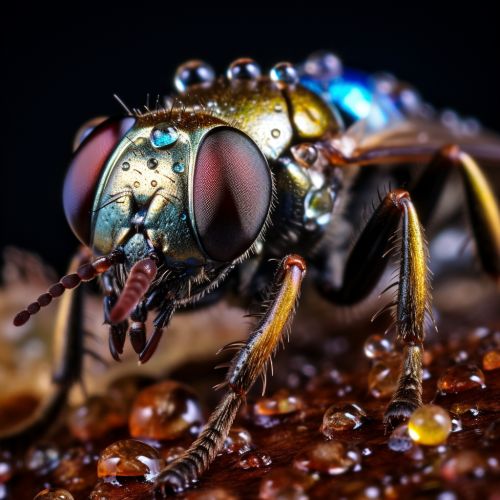Mechanisms of Microbial Symbiosis in Insect Guts
Introduction
Microbial symbiosis in insect guts is a fascinating and complex field of study. It involves the interaction of microorganisms, primarily bacteria, with their insect hosts. This symbiotic relationship is crucial for the survival and success of both the insect host and the symbiotic microbes. The mechanisms of microbial symbiosis in insect guts are diverse, involving intricate biochemical, genetic, and ecological interactions.


Symbiotic Microorganisms in Insect Guts
Insect guts are home to a wide variety of microorganisms, including bacteria, fungi, and viruses. These microorganisms, collectively referred to as the gut microbiota, play a critical role in the health and survival of their insect hosts. They aid in digestion, nutrient absorption, and defense against pathogens. The gut microbiota is highly diverse and varies greatly among different insect species, reflecting the wide range of diets and habitats of insects.
Mechanisms of Symbiosis
Nutritional Symbiosis
One of the primary mechanisms of microbial symbiosis in insect guts is nutritional symbiosis. Insects often feed on nutrient-poor or difficult-to-digest food sources. Symbiotic microbes help their hosts by breaking down these complex food materials into simpler, more easily digestible forms. For example, cellulose-degrading bacteria in the guts of termites Termites help their hosts digest wood, a food source that is largely indigestible to most animals.
Defensive Symbiosis
Defensive symbiosis is another key mechanism of microbial symbiosis in insect guts. Some gut microbes produce antimicrobial compounds that protect their insect hosts from pathogenic microorganisms. For example, certain strains of bacteria in the guts of honey bees Honey Bees produce antibiotics that protect the bees from harmful pathogens.
Developmental Symbiosis
Developmental symbiosis refers to the role of gut microbes in the growth and development of their insect hosts. Some insects, such as mosquitoes, rely on their gut microbes for proper development. For example, bacteria in the guts of mosquito larvae help regulate the larvae's growth and development.
Factors Influencing Microbial Symbiosis
Several factors influence the establishment and maintenance of microbial symbiosis in insect guts. These include the insect's diet, its immune system, and its gut morphology. The insect's diet is particularly important, as it determines the types of microbes that can survive and thrive in the gut. The insect's immune system plays a role in controlling the composition of the gut microbiota, while the gut morphology can affect the spatial distribution of microbes within the gut.
Implications and Applications
Understanding the mechanisms of microbial symbiosis in insect guts has important implications for various fields, including agriculture, health, and environmental science. For example, manipulating the gut microbiota of agricultural pests could provide a novel method of pest control. Similarly, studying insect gut microbes could lead to the discovery of new antibiotics or other medically useful compounds.
